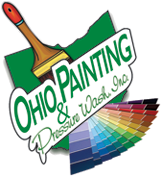Anyone who has undertaken a painting project, whether it’s painting an interior room in a house, a piece of furniture or the entire exterior of a dwelling, has heard the refrain “prime before painting!” from friends and friendly salespeople. But what is primer and why is it important to use primer in a painting project?
What is Primer?
Primer is a specially formulated paint used to treat a surface to insure subsequent layers of paint (topcoats) adhere properly providing greater longevity and durability. Primer seals porous surfaces reducing the need for multiple coats of paint that might otherwise be absorbed in the substrate. Primer also blocks stains and other discolorations of the surface being painted from bleeding through the finished painted layers.
Is it Always Necessary to Prime Before Painting?
If a previously painted surface is in relatively good condition (i.e., not peeling, cracked, or chipping), it’s not necessary to apply primer before repainting. However, any areas where paint has peeled or chipped off would need to have primer applied before adding topcoats. In instances where a darker color is being covered over with a lighter color, applying primer is recommended to insure the darker color doesn’t bleed through the lighter topcoat color.
Are “Paint and Primer in One” Paints Worth the Expense?
In recent years, paint manufacturers have introduced product lines offering paint and primer in one application. These paints are often marketed as providing one-coat application (instead of the standard two topcoats) and are more costly than regularly formulated paint. However, most of these paint and primer in one paints rarely provide full coverage in one coat. Most painting professionals recommend applying primer when and where necessary then using a high-quality paint for the finished topcoats.
Are Primers All the Same?
No, there are primers specifically formulated for the different types of surfaces (e.g., wood, vinyl, metal) to be covered. Oil or solvent-based primers are formulated for to insure maximum bonding and stain-blocking and are generally used on exterior surfaces. Since these types of primer contain higher concentrations of VOCs (Volatile Organic Compounds), they should not be used for interior painting projects. Other water-based primers can be used in both exterior and interior applications. It’s best to consult with a painting professional to determine the right kind of primer for your project.

